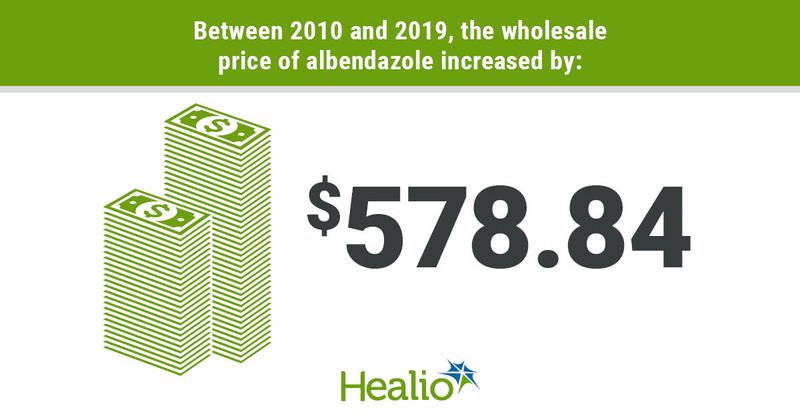‘Extreme’ price increases of antiparasitics tied to higher treatment costs
“Extreme” drug price increases for antiparasitic medication were associated with increased total outpatient treatment costs, or TOCs, researchers reported in JAMA Network Open.
“To our knowledge, few published studies have directly assessed associations between drug prices and use,” Junsoo Lee, MS, a researcher in the CDC’s Division of Global Migration and Quarantine, and colleagues wrote. “The findings of this cross-sectional study suggest that substantial drug price increases may be associated with higher patient treatment costs and lower use of recommended treatments.”

Lee and colleagues conducted a cross-sectional study to determine the association between antiparasitic drug prices for hookworm and pinworm with prescribing and prescription-filling behaviors and TOCs. They compared their results with those for Clostridioides difficile because of its similar outpatient characteristics and the amount and specificity of drugs available.
Wholesale prices of albendazole (Albenza, LGM Pharma) increased from $3.16 to $582 between 2010 and 2019, whereas prices for mebendazole (Emverm, Amneal) spiked from $32 to $2,853 during the same time period. Among 45,485 patients with hookworm or pinworm, standard-of-care drug use decreased as drug prices increased between 2010 and 2018. Conversely, standard-of-care prescription drug use increased as drug prices decreased for C. difficile.
Specifically, standard-of-care prescriptions dropped from 43% to 28% for patients with hookworm and from 81% to 28% for patients with pinworm. For patients with C. difficile infection, prescriptions increased from 69% to 77%.
Lee and colleagues wrote that one of the study’s major limitations was its descriptive design.
“There were inherent issues in reliance on claims data (eg, patients who purchased drugs without insurance claims), there was an absence of data for over-the-counter drugs, and there were potential unaccounted associated factors, such as formulary changes by insurance companies,” the authors wrote. “In addition, the findings were limited to patients with private insurance.”
